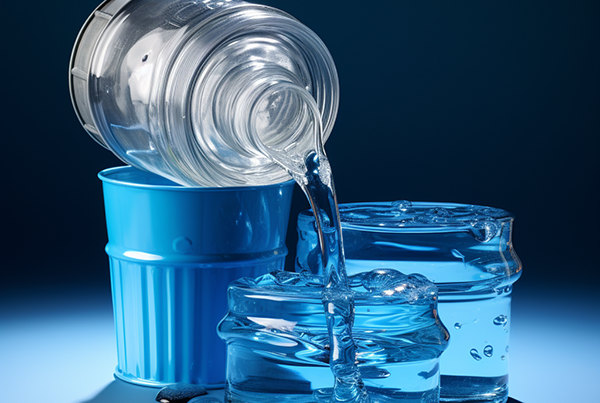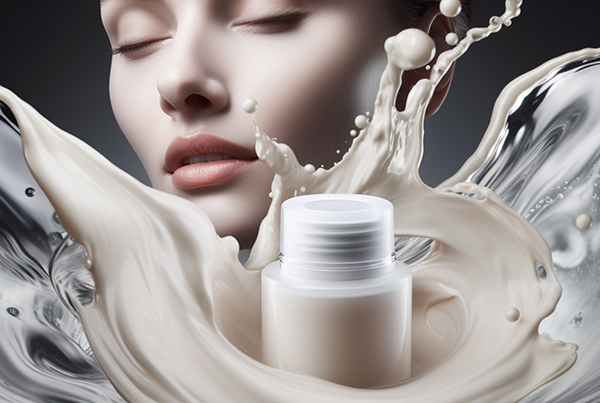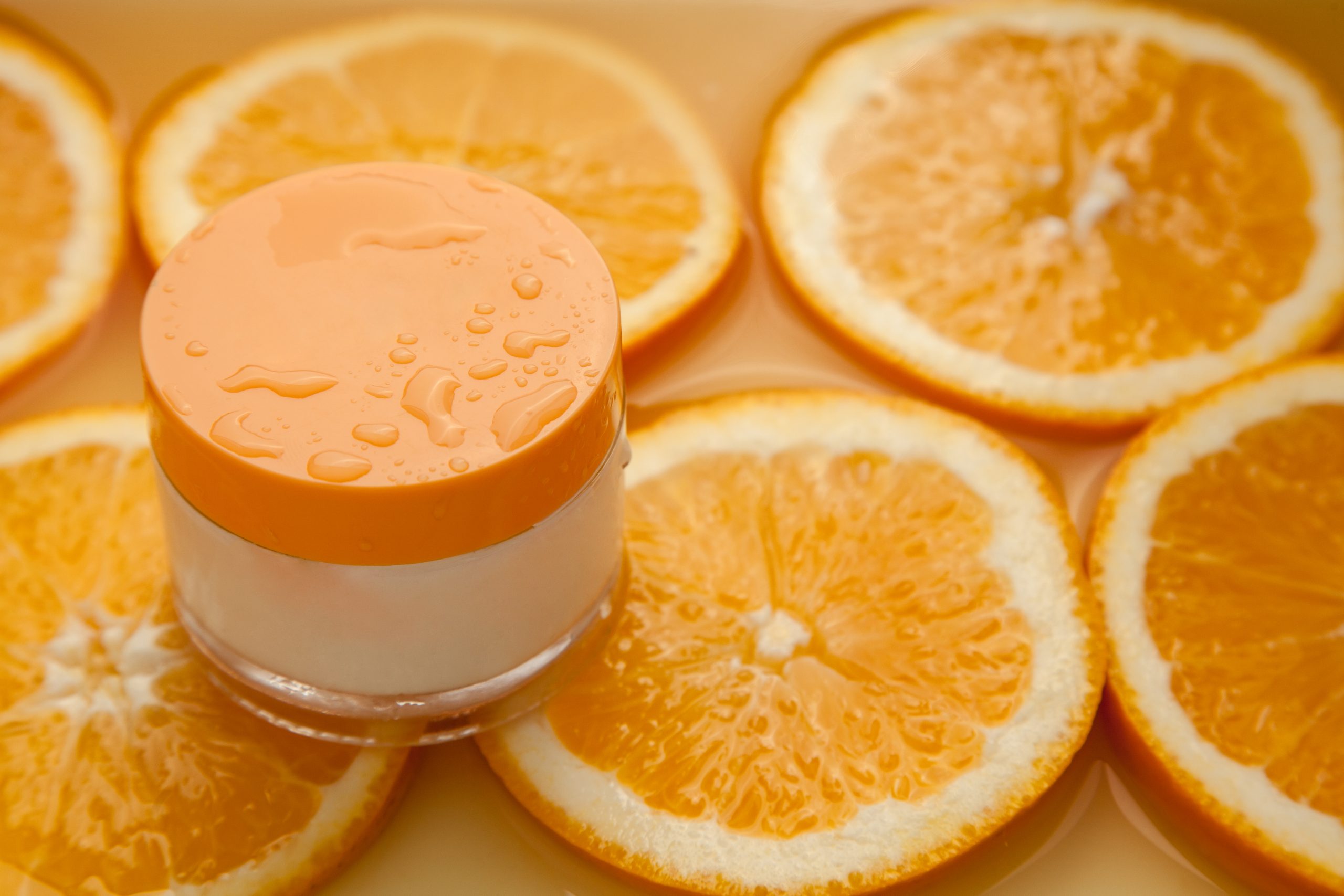Cosmetic grade silicone is safe, that’s a FACT.
And if people spent more time researching FACTS, and less time getting hysterical over manipulated data, half-truths, and flat-out lies from fear-mongering activist groups, they’d understand silicone’s incredible contribution to the cosmetic industry.
For the record, words do not adequately express how much I despise lobbyists that disguise themselves as “environmental activists”. Yes, Environmental Working Group (EWG), I’m looking at you. You’ve earned a permanent place at the top of my “Liar, Liar, Pants On Fire” list.
FICTION
Cosmetic-grade silicone causes allergic reactions, is a skin iritant, and clogs pores.
FACT
Synthesized cosmetic grade silicones are derived from mineral components known to have extremely low allergen occurrences.
The cold, hard fact is, NOTHING is completely non-allergenic. Someone somewhere is going to experience an allergic reaction to even the most inert ingredient or carefully formulated product.
EXAMPLE:
Aquagenic urticaria, also known as water allergy, is a diagnosed form of physical urticaria (hives). The defining symptom is a painful skin reaction resulting from contact with water.
Yes, you read that correctly – an allergenic reaction to water.
AND as long as we’re addressing allergenic skin reactions, let’s clarify the meaning of the most abused and misunderstood word in the cosmetic industry – hypoallergenic.
Hypoallergenic is not a scientific term, it’s a word that was created for advertising, by marketers. The term actually means less or slightly allergenic – not allergen-free.
MORE FACTS
A lot of people are allergic to latex, so hospitals and medical practices replaced latex-based medical adhesives (which were the standard for decades), with SILICONE-based medical adhesives because of their extremely low occurrence of allergenic skin reaction. Medical practitioners concur that the silicone-based adhesives are not only less allergenic, they’re safe to use in close proximity to open wounds – REPEAT: safe enough to use next to open wounds.
EVEN MORE FACTS
Many people believe that because silicones create a barrier on the skin, they must suffocate it, and clog pores. There is NO clinical data to support those claims.
Cosmetic grade silicones are derived from silica (also known as silicon dioxide). Their particular molecule structure is made of larger molecules with wider spaces between each molecule. They create a barrier matrix that’s both protective and breathable on the skin’s surface. Their molecular size makes it impossible to migrate past the Epidermis.
The wide spaces between molecules make silicones an ideal delivery system for active ingredients that require extended absorption time. These actives remain suspended in the inert silicone matrix (sitting on the skin’s surface), so they can absorb slowly.
COMMON SILICONES USED IN COSMETIC MANUFACTURING:
Dimethicone – a clear, non-reactive, liquid that can range in thickness, depending on the length of its polymer backbone, from watery thin to taffy thick.
Dimethicone Copolyol – a silicone which contains an -OH group which makes it more soluble in water. This makes it easier to incorporate into water-based formulations, but also reduces the “slip effect” (silky feel) of the silicone.
Cyclomethicone – a shorter cyclic molecule which has many of the same properties of dimethicone except that it evaporates while dimethicone does not.
Cyclo-Dimethicone – a mixture of a linear high-molecular weight silicone (dimethicone) and cyclic low-molecular-weight silicone (cyclomethicones).
![]()
DIMETHICONE AND DIMETHICONE COPOLYOL
Dimethicone and Dimethicone Copolyol are used primarily in color complexion cosmetics (foundation, concealer, etc.) because they don’t evaporate and stay on the skin longer. They act as a carrier for in-soluble mineral pigments, which provide color and coverage to complexion products. The addition of silicone to the carrier fluid/emulsion creates a breathable, non-occlusive, flexible film allowing the inert mineral pigments to ride on the surface of the skin without caking, or falling into fine lines.
CYCLOMETHICONE
Cyclomethicone is used primarily in skin care products and acts as a carrier to deliver other ingredients that are meant to be absorbed by the skin immediately, or in a time-released manner. They also add glide for smoother application, then disappearing without leaving a residue.
CYCLO-DIMETHICONE
Cyclo-Dimethicone is a blend of stable Dimethicone and evaporating (volatile) Cyclomethicone. This hybrid offers an emulsion perfectly suited for use in “long-last” color cosmetics (foundations, liquid lipsticks, etc.).
![]()
DRAWBACKS OF NON-SILICONE FOUNDATIONS:
Non-silicone carrier fluids used in foundations (glycerine, mineral/vegetable/nut oils) have a small enough molecular structure to be readily absorbed into the skin. Once absorbed, they leave behind a MASK-LIKE layer of the insoluble mineral pigments that create the color and coverage of the foundation.
(did you just have an “ah-ha” moment?)
An easily absorbed carrier fluid can carry highly micronized, insoluble ingredients into the pores, and enlarge or clog them.
DID YOU KNOW?
Silicone-based makeups are ideal for acne prone or other sensitive skin types.
The AAD (American Academy of Dermatology) cites the inert, non-reactive properties of cosmetic grade silicone as “a helpful ingredient in makeup products, like foundation, for cystic acne and rosacea patients. Silicone-based foundation can help reduce skin redness, stinging or irritation normally associated with the application of face makeup on these skin-types.”
So, complexion cosmetics with a silicone-based carrier emulsion are well-suited to hyper-sensitive or reactive skin conditions – which means they’re also preferable for post-cosmetic surgery patients as “cover-up” during recovery.
FICTION
Cosmetic-grade silicone is a health hazard when inhaled.
FACT
This is more baseless fear-mongering and half-truths to create hysteria.
Are certain silicones unsafe to inhale? Yes, INDUSTRIAL SILICONES are unsafe to inhale. People working with them or around them wear protective gear to prevent inhalation.
But to create hysteria, ingredient activist groups and shady natural/organic cosmetic marketers chose to a misrepresent data and selectively cite the hazards associated with industrial silicones as if these dangers apply to ALL silicones – which they don’t.
The cosmetic-grade silicone used to create airbrush makeup products is safe to inhale, that’s a FACT.
It’s time to stop repeating fear-mongering, hyperbole, and conjecture. We MUST practice critical thinking, do proper research and share verified FACTS when discussing cosmetic ingredients.
Leave the FICTION to novelists.






